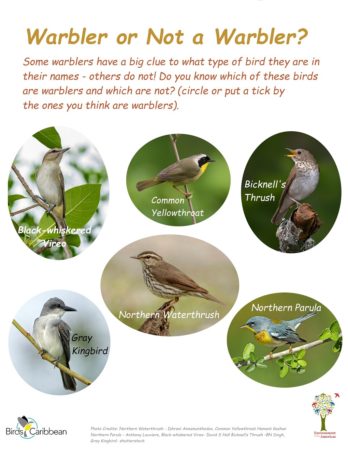Celebrate World Migratory Bird Day (WMBD) with us in our virtual “Birds Connect Our World” edition! Have fun learning about a new migratory bird every day. We have colouring pages, puzzles, activities, and more. Download for free and enjoy nature with your family at home.
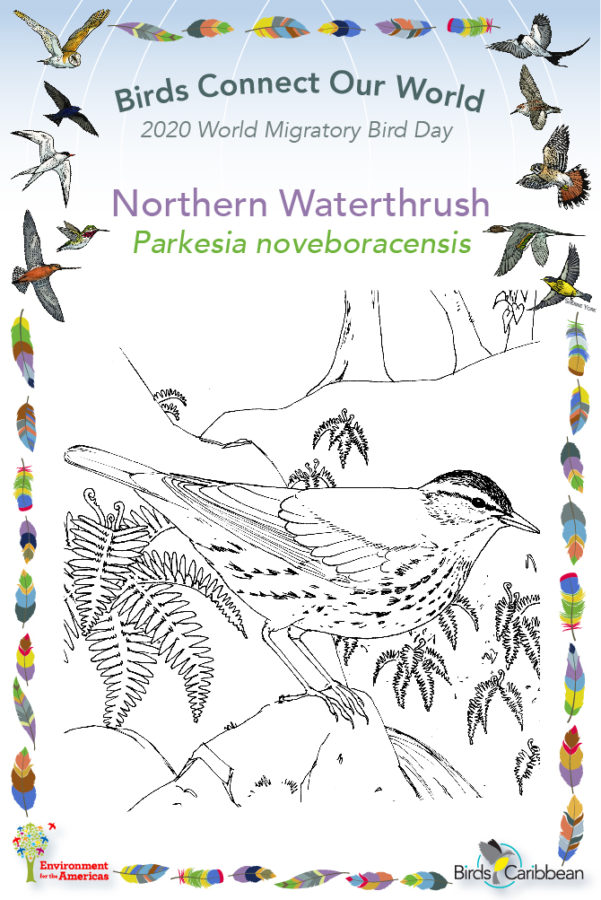
Migratory Bird of the Day: Northern Waterthrush
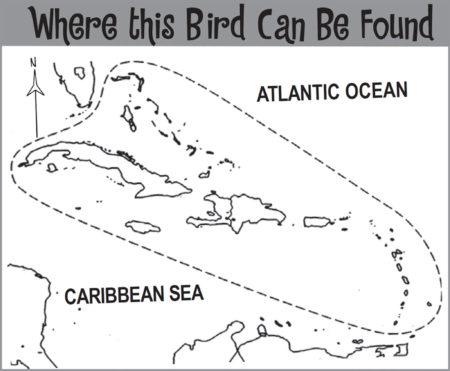
Although its name and plumage suggest this bird is a thrush, the Northern Waterthrush is in fact a warbler. This large, long-legged, long-tailed warbler spends much of its time on the ground. It has dark olive-brown upperparts, and buffy or yellowish underparts. The underparts are marked with dark brown streaks that become finer on the throat. It has a prominent, buffy stripe above the eye, usually narrowing towards the nape. The sexes are identical.
The Northern Waterthrush is sparsely distributed across a vast breeding range from Alaska eastward across Canada, with some birds breeding in the northern US. They are long-distance migrants and travel to the Caribbean, Central America, and northern South America in fall. In winter, Northern Waterthrushes can be found throughout the Caribbean. Some birds will stay for the whole winter, but many more will pass through the islands for wintering grounds further south.
As their name suggests, Northern Waterthrushes occur in wet habitats. On the breeding grounds, these include wooded swamps, bogs, or other wetlands bordered by shrubs or thickets. On the wintering grounds, Northern Waterthrush are most often found in or near mangroves or other wetlands.
In the Caribbean, Northern Waterthrushes are solitary and hold territories. They frequently advertise their presence with loud, metallic, chink calls. If you hear one, look for it walking along the water’s edge. It bobs and teeters, jumps over obstacles, and rhythmically pumps its tail. Northern Waterthrushes feed mainly on aquatic insects, but they may also take snails, small clams, and crabs. The Northern Waterthrush is not currently threatened, but the loss of mangroves through development and climate change may be impacting this species. Learn more about this species, including its range, photos, and calls here.
Colour in the Northern Waterthrush!
Download the page from Migratory Birds of the West Indies Colouring Book. Use the photos below as your guide, or you can look up pictures of the bird online or in a bird field guide if you have one. Share your coloured-in page with us by posting it online and tagging us @BirdsCaribbean #WMBD2020Carib
Listen to the calls of the Northern Waterthrush
The calls of the Northern Waterthrush are a loud sharp “tchip”
Puzzle of the Day
Click on the images below to do the puzzles. You can make the puzzle as easy or as hard as you like – for example, 6, 8, or 12 pieces for young children, all the way up to 1,024 pieces for those that are up for a challenge!
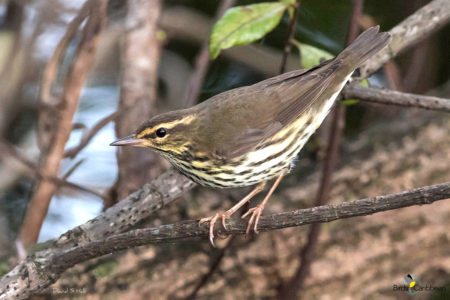
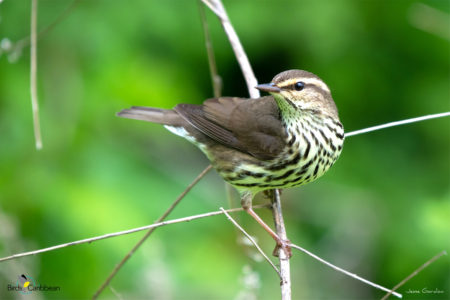
Activity of the Day
FOR KIDS: Some warblers give you a big clue to the group of birds they belong to in their names, like ‘Hooded Warbler’ or ‘Yellow-rumped Warbler’. But some other warblers do not! Do you remember which of our migratory birds are warblers? Test your knowledge in our “Warbler or Not a Warbler” game. You can find the answers by looking at previous blog posts. You can find the answers here.
FOR KIDS AND ADULTS:
- Take a walk and see if you can spot any migratory warblers. Use a bird field guide or the FREE Merlin bird ID app to help you identify the birds you are seeing.
- Enjoy the videos below of Northern Waterthrushes in the wild! The first show a bird foraging on the ground in a mangrove, bobbing its tail up and down. The second shows a bird repeatedly giving its loud distinctive call, hearing this call is often a first clue that a Northern Waterthrush is around.
- Visit MigratoryBirdDay.org for many more free activities and resources to learn about migratory birds, their threats and conservation actions you can take.

